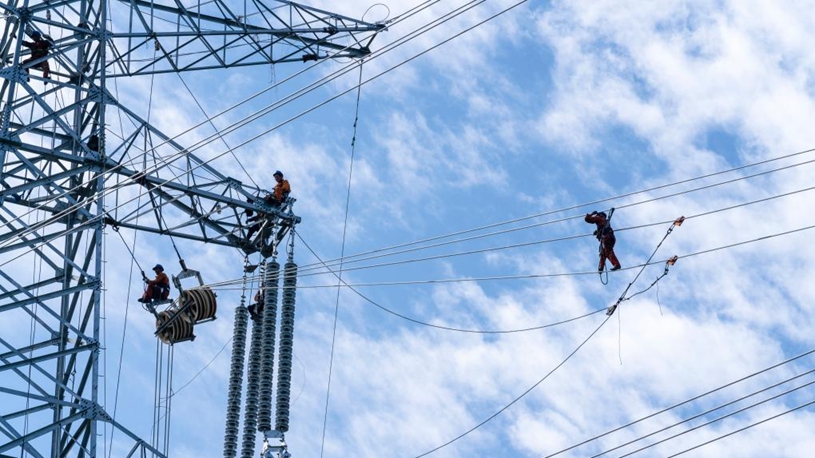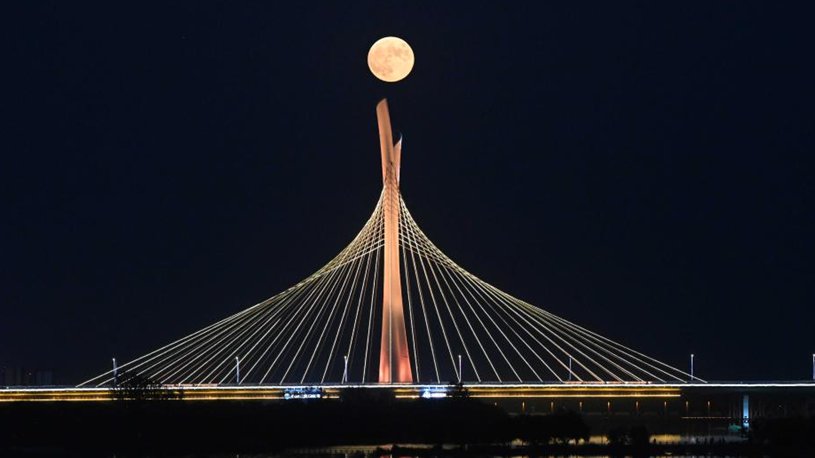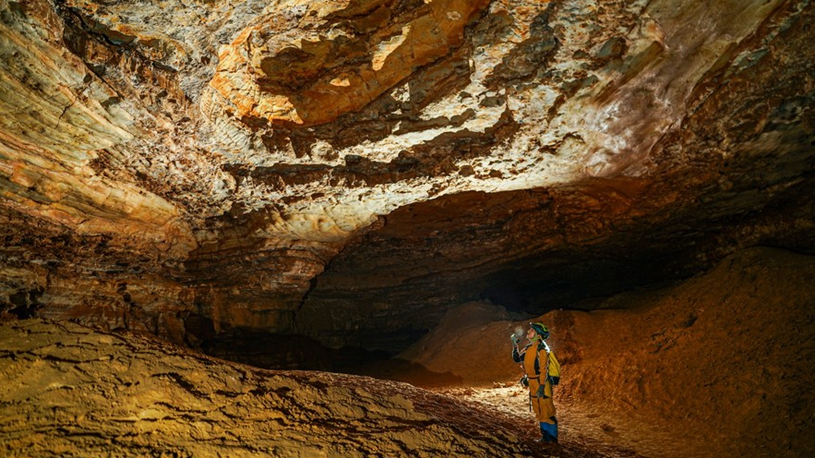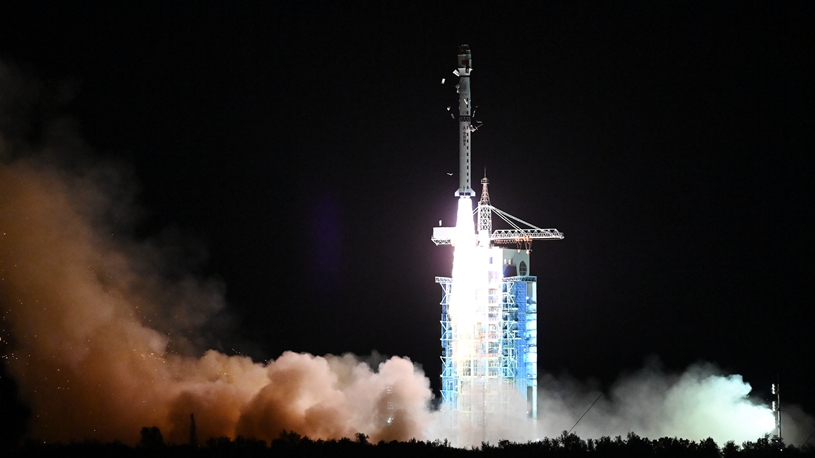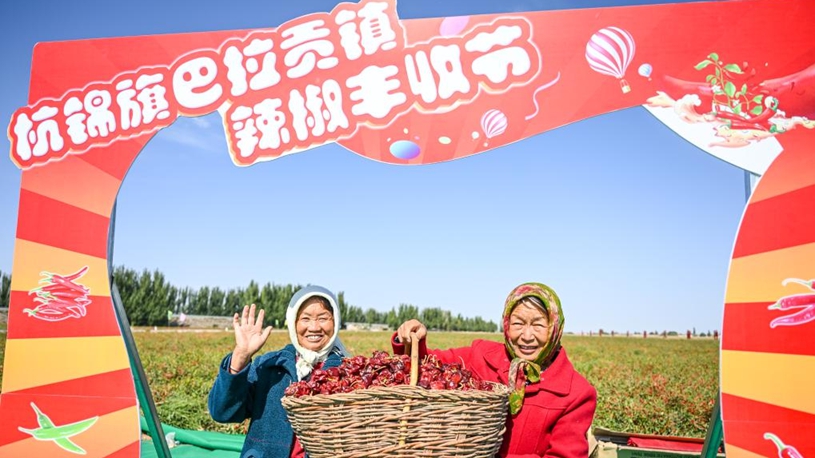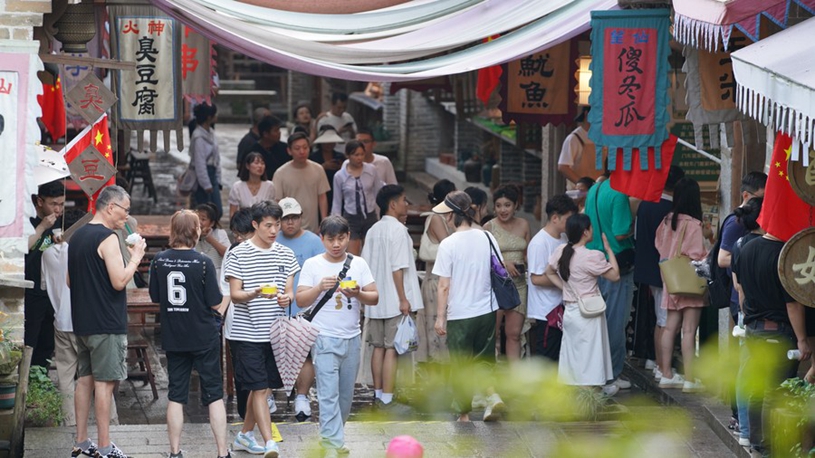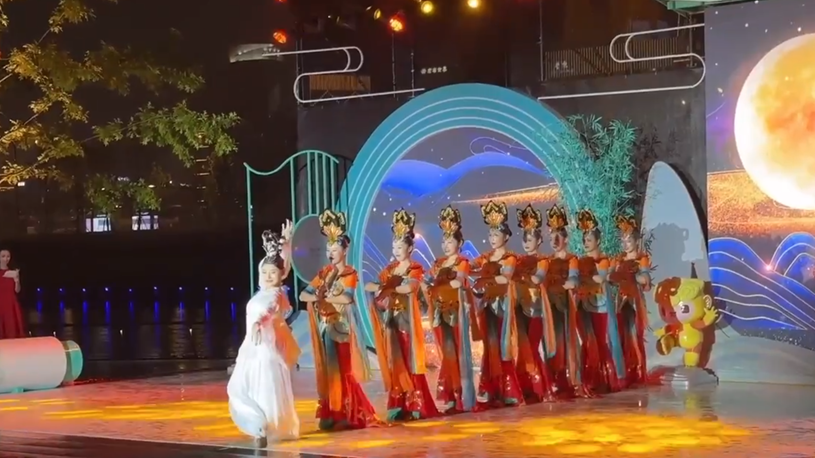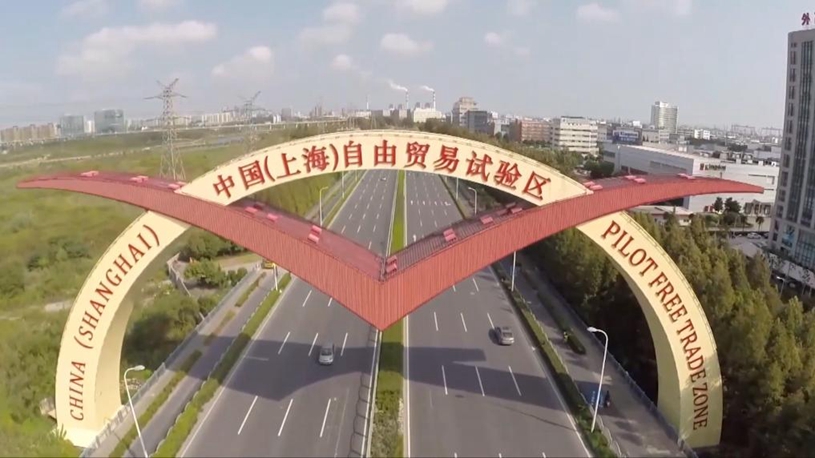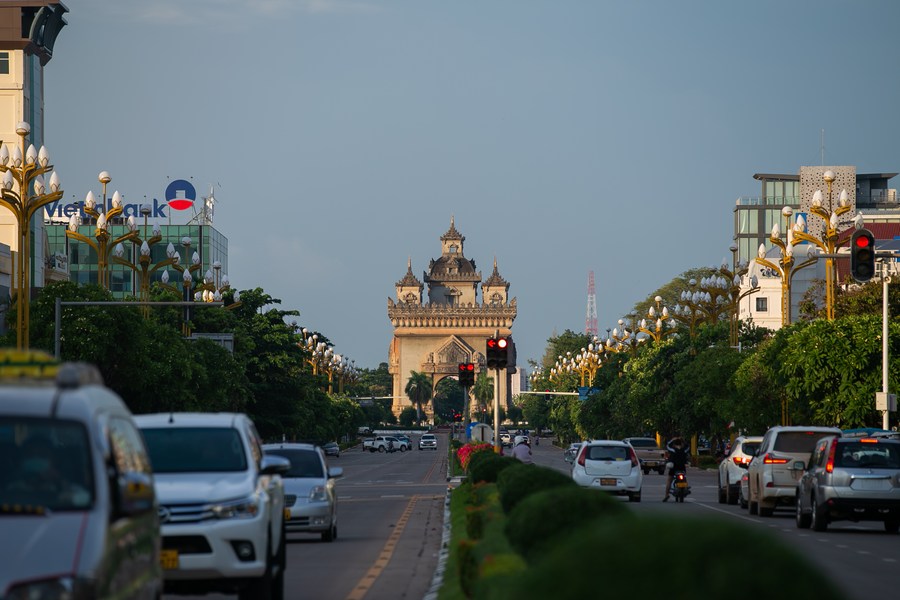
Photo taken on Sept. 12, 2021 shows a view of a street near Patuxay monument park in Vientiane, Laos. (Photo by Kaikeo Saiyasane/Xinhua)
As of April 2023, a total of 3,895 electrically powered vehicles had been imported into Laos, of which 1,773 were motorbikes.
VIENTIANE, Oct. 1 (Xinhua) -- Due to the spiraling cost of fuel, more and more people in Laos are switching to electric vehicles (EVs) with the aim of saving fuel costs and reducing air pollution.
Sengchan Khamxay, a 35-year-old trader in Vientiane province, decided to shift to using an electric vehicle five months ago, and now he is very happy because it helps cut cost of living.
"My job requires me to drive to various locations several times a day. Previously, I used a diesel-powered car and my expense on petrol costs was high at 200 to 300 U.S. dollars per month," Sengchan told Xinhua on Friday.
"I think electric car will be the best way to help save my money, and I was right."
"Besides saving money, electric vehicles are environmentally-friendly. With its competitive price, modernly designed, advanced technology, and safety features, I think many people can afford to buy one," he said.
The Lao government is strongly encouraging the use of electrically powered vehicles in a bid to reduce the need for imported fuel and ensure greater energy security.
Buavanh Vilavong, director general of Department of Industry and Handicraft under the Lao Ministry of Industry and Commerce, said the use of EVs in Laos is urgent to minimizing the budget for importing petroleum, adding that the import value of this product in Laos is relatively high, accounting for 20 percent of the country's total import value.
Meanwhile, Laos has great potential for electricity production, thus, promoting the adoption of EVs nationwide is the right direction to take advantage of internal resources as well as to ensure trade balance.
In July, the Lao government imported about 65 million U.S. dollars of diesel and 20 million dollars of regular and premium grade petrol. In August, the spending dropped to 58 million dollars for diesel and 17 million dollars for regular and premium grade petrol, official data showed.
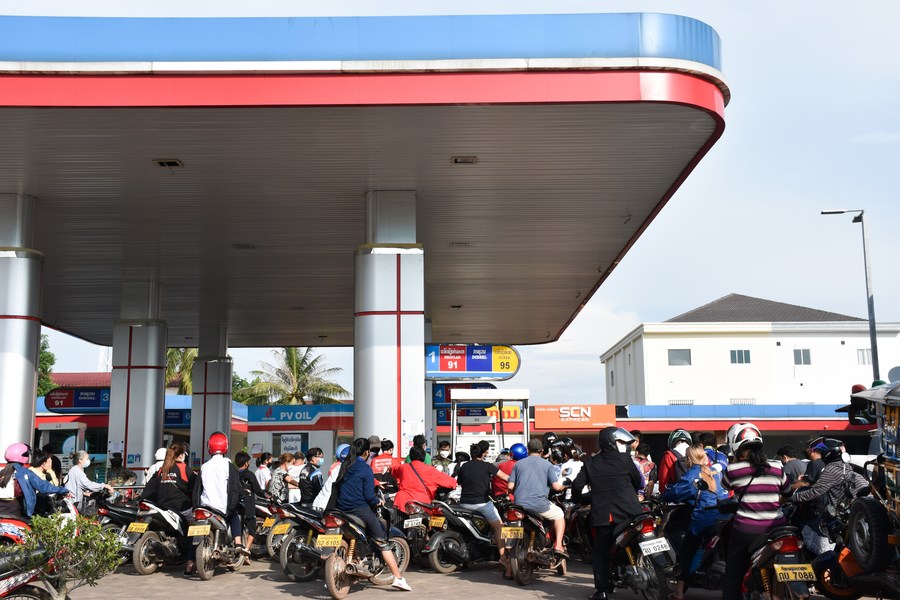
Citizens queue up for fuel at a petrol station in Vientiane, Laos on May 12, 2022. (Photo by Kaikeo Saiyasane/Xinhua)
That was because the government is encouraging the use of electric vehicles.
"I still remember when Laos faced months of fuel shortages in early 2022, with many petrol pumps closing down and long queues experienced at those that remained open. It was terrible," 36-year-old man named Phakdy told Xinhua on Friday.
"Since the cost of fuel is still high, I don't want to waste more money on petrol. Now I am planning to buy an electric car at the end of this year," he said.
The continued depreciation of the Lao kip amid rising global oil prices has caused havoc for fuel distributors, who must import fuel from abroad in foreign currency and sell to consumers in local currency.
To prevent a drop in fuel imports, the government is working to ensure that fuel importers have access to sufficient foreign currency to buy all the fuel that is needed for Lao consumers.
In 2022, the number of electric vehicles in use was recorded at 3,201, comprising 1,428 cars and 1,773 motorcycles. There are currently more than 20 charging stations in Laos and 18 dealerships have expressed interest in importing electric vehicles for sale across the country.
As of April 2023, a total of 3,895 electrically powered vehicles had been imported into Laos, of which 1,773 were motorbikes.
The Lao government promotes EVs to advance clean energy use in transportation, aiming for an action plan by 2025, a strategy by 2030, and a vision by 2050.■

